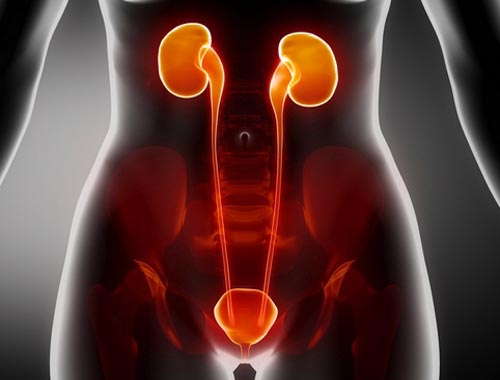Pyelonephritis (Kidney Infection)
Pyelonephritis is caused by a bacterium or virus infecting the kidneys. Though many bacteria and viruses can cause pyelonephritis, the bacterium Escherichia coli is often the cause. Bacteria and viruses can move to the kidneys from the bladder or can be carried through the bloodstream from other parts of the body. A UTI in the bladder that does not move to the kidneys is called cystitis. People most at risk for pyelonephritis are those who have a bladder infection and those with a structural, or anatomic, problem in the urinary tract. Urine normally flows only in one direction, from the kidneys to the bladder. However, the flow of urine may be blocked in people with a structural defect of the urinary tract, a kidney stone, or an enlarged prostate, the walnut-shaped gland in men that surrounds the urethra at the neck of the bladder and supplies fluid that goes into semen. Urine can also back up, or reflux, into one or both kidneys. This problem, which is called vesicoureteral reflux (VUR), happens when the valve mechanism that normally prevents backward flow of urine is not working properly. VUR is most commonly diagnosed during childhood. Pregnant women and people with diabetes or a weakened immune system are also at increased risk of pyelonephritis.
